Release Point editor Alex Williamson is a co-author of this article.
Note: If you watch the clips from YouTube in this article (not going to the YouTube app or site), they are set so that only relevant sections play, not the entire videos.
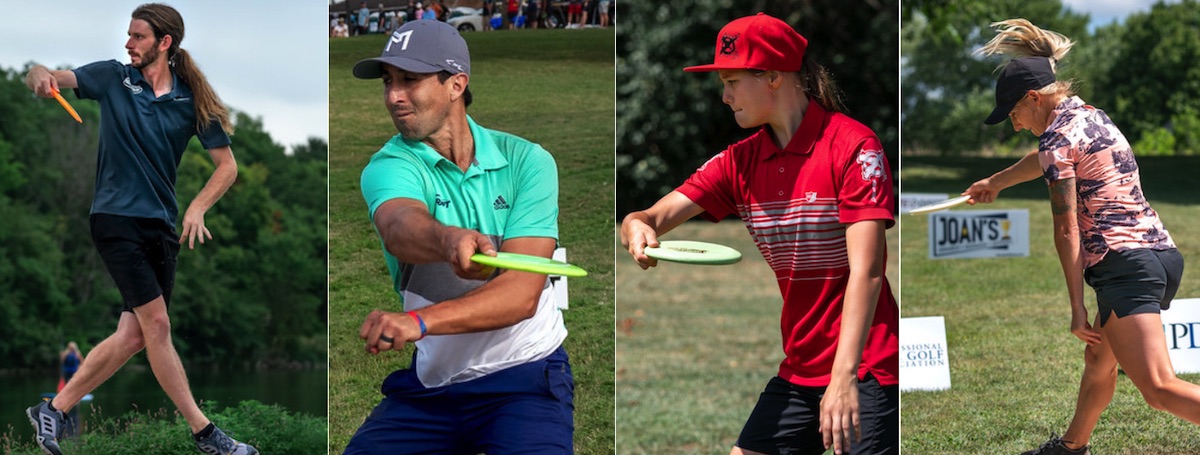
For many disc golfers, there comes a point when they realize improving their game means taking the time to really learn what mechanics go into good throws. There are forums, social media groups, and videos aplenty dedicated to helping people with this.
But all those resources often use a very specific set of vocabulary that people new to talking disc golf form won't recognize. Below we go over the most common words used by tipsters, critics, and teachers to help anyone preparing for their first dive into the world of disc golf throwing technique.
Note that we focus on terms related specifically to backhand throws—the type you see players performing in the image at the top of this article. Though some terms overlap, we still plan to cover forehands (a.k.a. flicks or sidearms) in a future Throw Talk article.
1. The Wide World of Disc Golf Grips
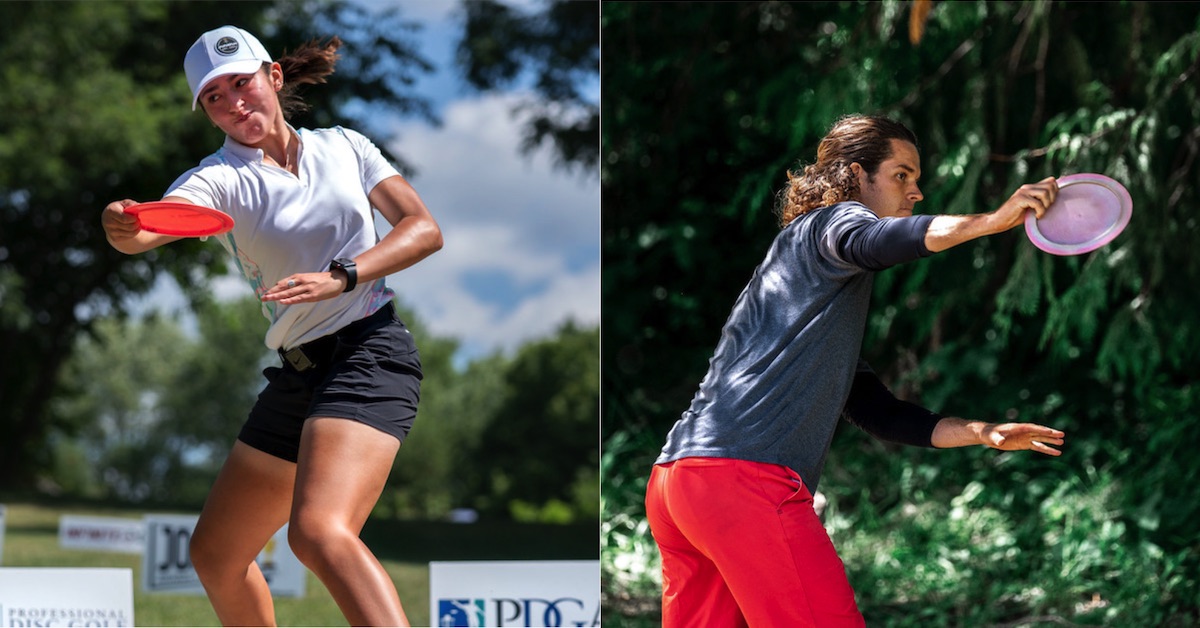
Every throw begins with a grip, and there's a huge variety of them that people have developed. However, every backhand grip is a variant on either the fan grip or power grip.
Below, pro Michael Johansen demonstrates a fan grip and talks a little bit about why he likes it in a video from Discraft:
As Johansen mentions, the extended fingers in fan grips give players a lot of control over a disc's flight plate (find out what a flight plate is here), allowing them to more easily manipulate a disc's flight path. However, fan grips are generally only used for short-range shots with putters and mid-ranges because they limit potential distance.
Johansen is somewhat unusual in that he uses a fan grip for all his throws, including for long drives. Not surprisingly, he's best known for astounding accuracy and not distance.
You can probably guess from the name, but the power grip is commonly used for long-distance throws. You can see it demonstrated below by 2009 Disc Golf World Champion Avery Jenkins in a video from SpinTV:
As you can see in that video, power grip refers to tucking all four fingers tightly against a disc's rim.
Variations on these two grips generally come with the adjective "modified," but there is no way to know exactly what someone means by "modified fan grip" or "modified power grip" unless they show you. They could be moving one or more fingers slightly farther away from each other than in the standard grip, applying pressure with certain fingers and not others, or a number of other alterations.
There are also power grips some players use that utilize less than four fingers. Though one finger-power grips seem unlikely, three finger power grips (pointer, middle, ring) are relatively common, and two finger power grips (pointer, middle) also pop up occasionally.
2. Run-Up & X-Step in Disc Golf
The term run-up is petty self explanatory. It's the steps players take before a throw to generate momentum and put themselves in an athletic position. The speed and length of run-ups often change depending on the distance of a shot, with many players opting to stand still on shorter shots. These factors also change simply based on the techniques different players have adapted.
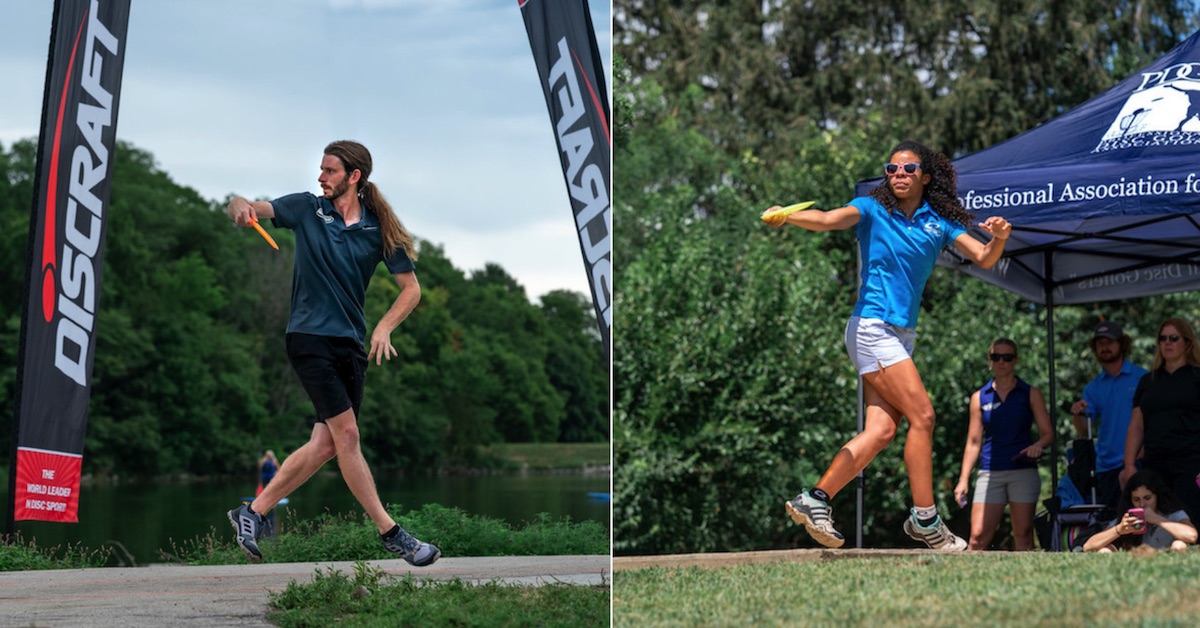
Pro James Conrad's run-up is famously long. Take a look at it in this clip from JomezPro:
Conversely, Japanese pro Manabu Kajiyama is known for his relatively slow, compact run-up (clip from SpinTV):
Whatever the differences, one thing almost all run-ups have in common is the x-step. If you take a look at the images at the beginning of this section, you'll see examples of what an x-step looks like.
The point of this maneuver, where the back foot steps ahead of the front as the body moves sideways toward your target, is that it turns your hips, allowing the power generation of your legs to transfer to the throw. You can see a clarification of that concept below in a clip from BHSDiscGolf:
3. Reach Back in Disc Golf
The reach back occurs during the run up and refers to the hand holding the disc being extended behind your forward-moving body as in the images above. An important point to make here is that this term may be somewhat deceptive.
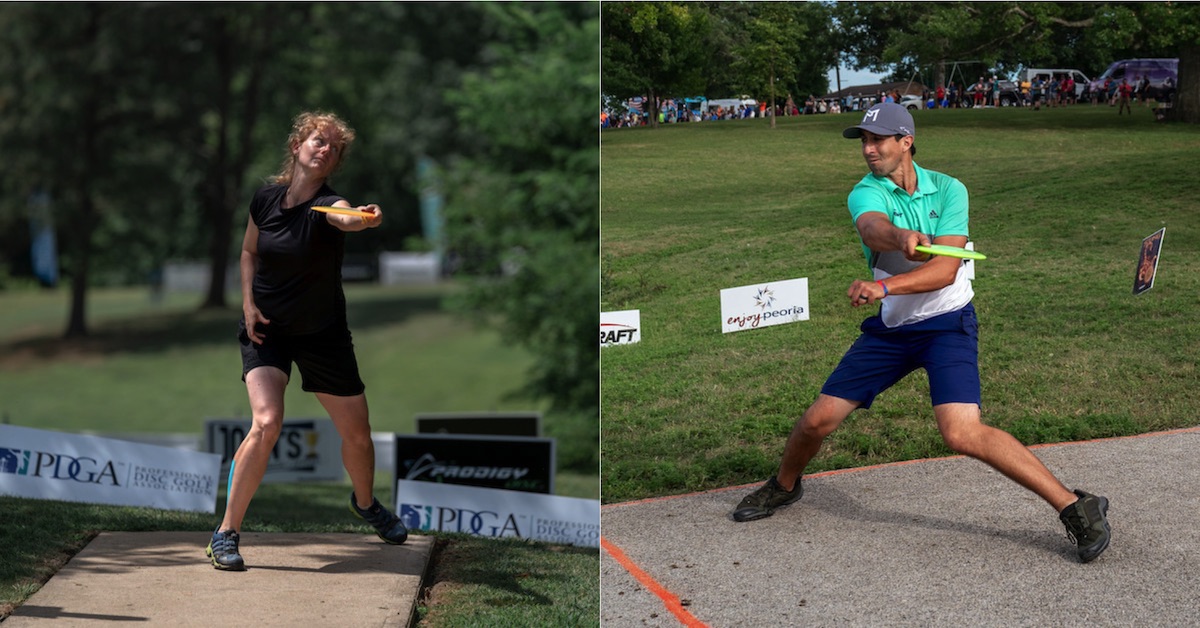
As pro Brian Earhart pointed out in an article for Ultiworld Disc Golf, actively using the upper body to reach the disc behind you can have negative consequences.
4. Disc Golf Brace
The brace (a.k.a. plant) refers to when the lead leg is braced against the ground, stopping your forward progress and allowing the power you generate through weight shift and hip rotation to transfer into the disc. It may be helpful to think of your lead leg acting somewhat like a pole vaulter's pole.
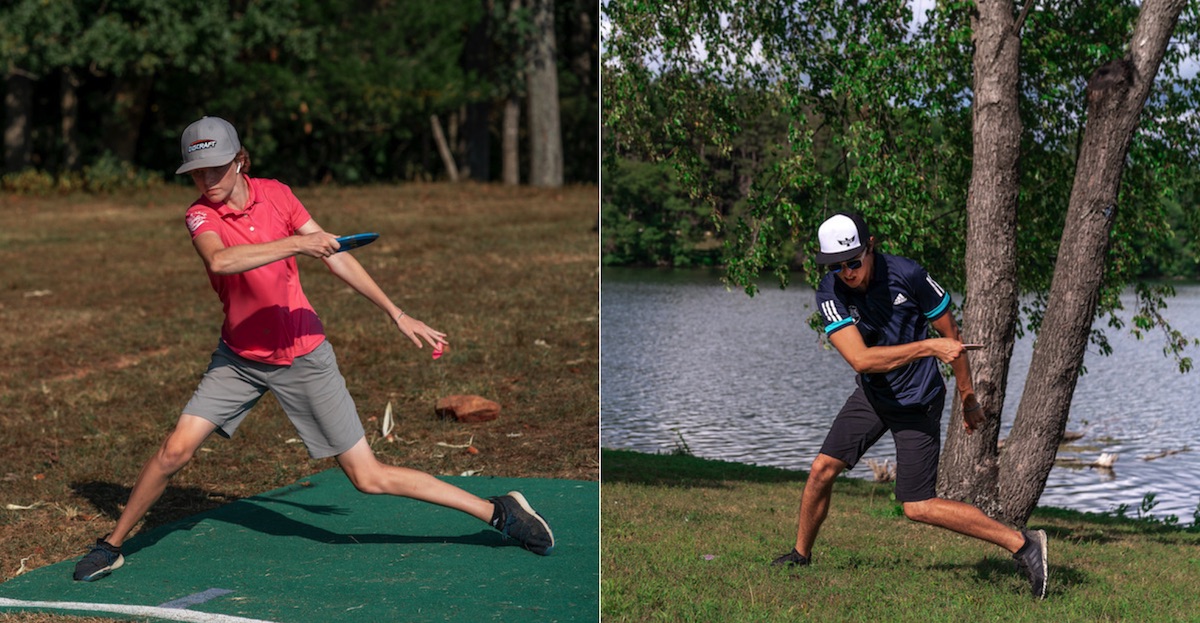
5. Disc Golf Power Pocket
If movements are timed properly and the body is positioned correctly, as the throwing motion propels the disc forward from your full extension (a.k.a. reach back), it will enter the power pocket. This occurs when the arm is cocked to unleash a disc that's in a "pocket" in front of a player's chest. If you should be lucky enough to create a true power pocket, your weight will be centered over your hips and your shoulders will still be slightly closed.
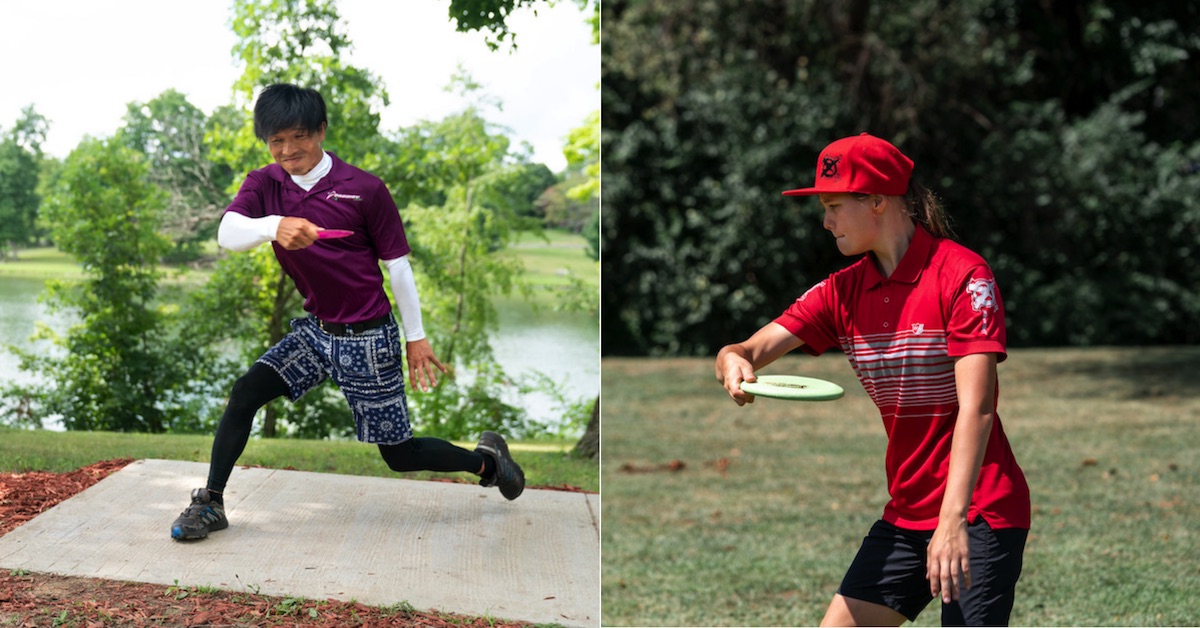
Anyone looking for backhand throw tips will be sure to hear about creating the power pocket very quickly into their research as it's the one thing all power throwers have in common.
6. Release Point
If you're generating any sort of power, there will come a point in your throwing motion when you can no longer hold onto a disc. That point is what as known as the release point.

The way your body is positioned, your reach back, your run-up, and many other things all decide where your release point will be. A lot of the difficulty of disc golf is mastering coordinating all those factors consistently so discs leave your hand at the points you want them to.
7. Two Disc Golf Form Flaws: Rounding & Nose-Up
Two other words you'll likely hear often in videos about improving form are rounding and nose-up. These will both likely be mentioned in the context of things you want to avoid.
You can see an example of rounding in this video from Danny Lindahl:
You'll notice the arm extended the disc to a place where the body was in the way of its forward progress during the throw, forcing the disc on a round path rather than a straight one. That's what's most commonly meant by rounding.
Nose-up refers to releasing a disc with the front pointed at an upward angle. This makes discs fly up in the air rather than forward, greatly limiting distance.
Look Out for Future Articles With Top-Notch Tip Videos
A big reason we're releasing "Throw Talk" now is that we're gearing up to continue our 5 Great Videos series with a focus on different aspects of backhand throws. If you don't know about that series, it's where we present five excellent tip videos and tell you exactly what information they provide when. It helps you save time by knowing exactly where the information you're looking for is.
You can take a look at our previous 5 Great Videos articles on Approaches/Upshots and Putting here. And look out for the new additions to the series in the coming weeks!
